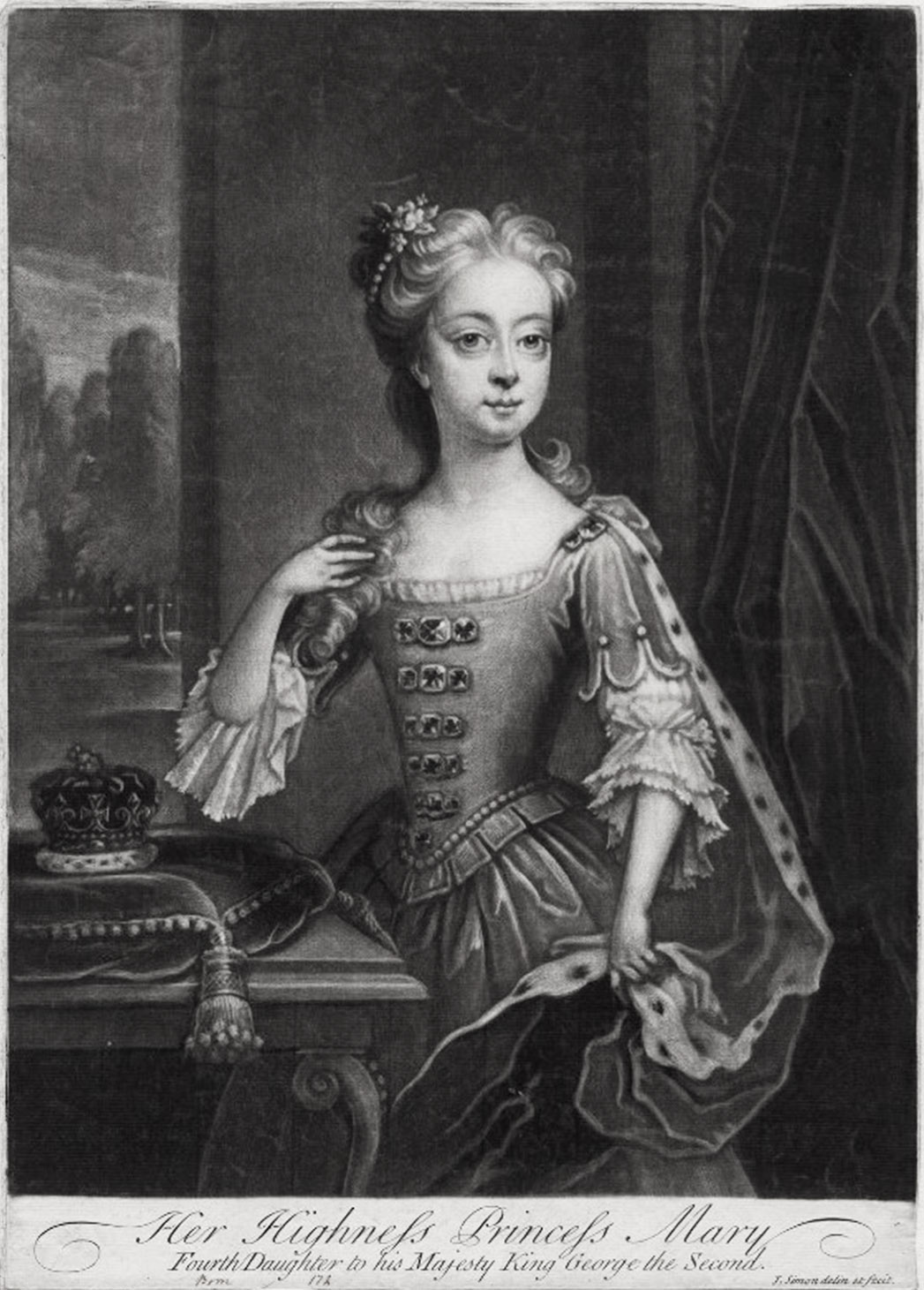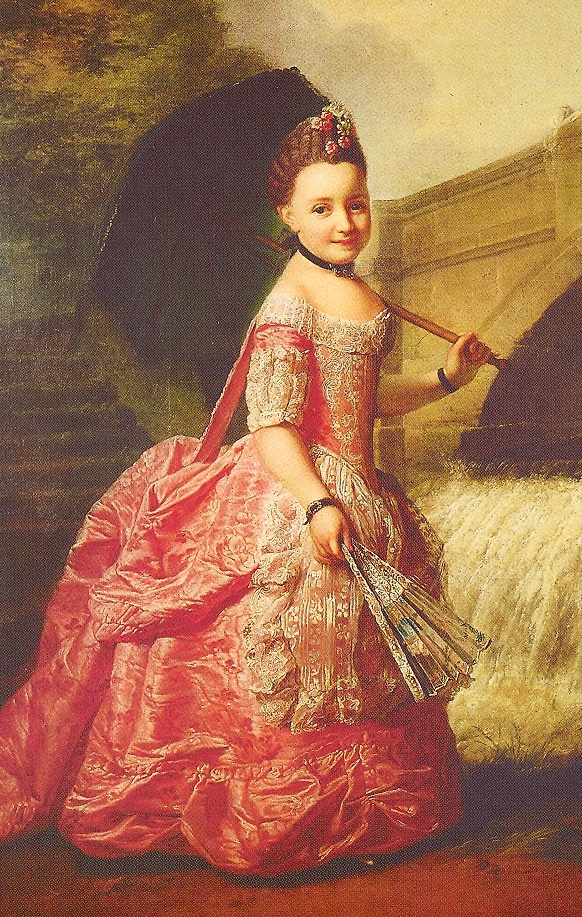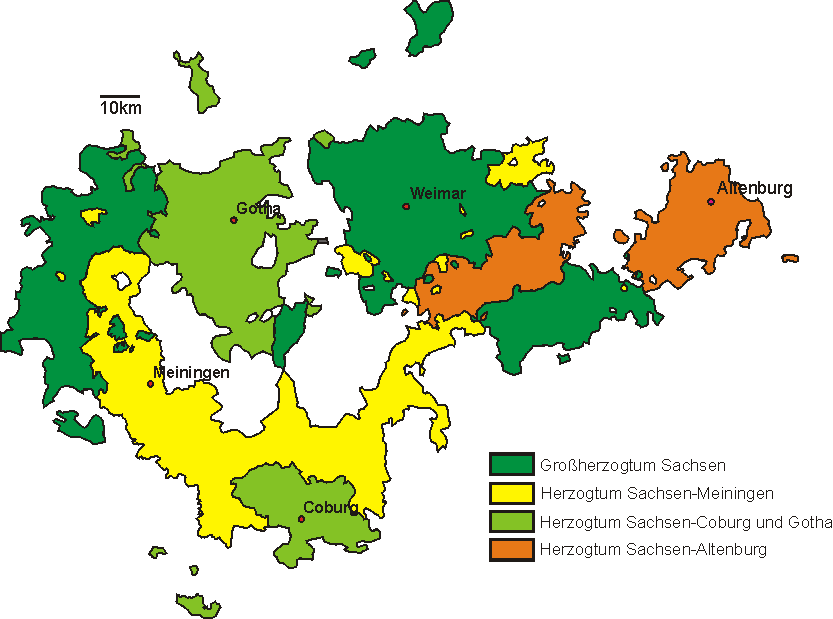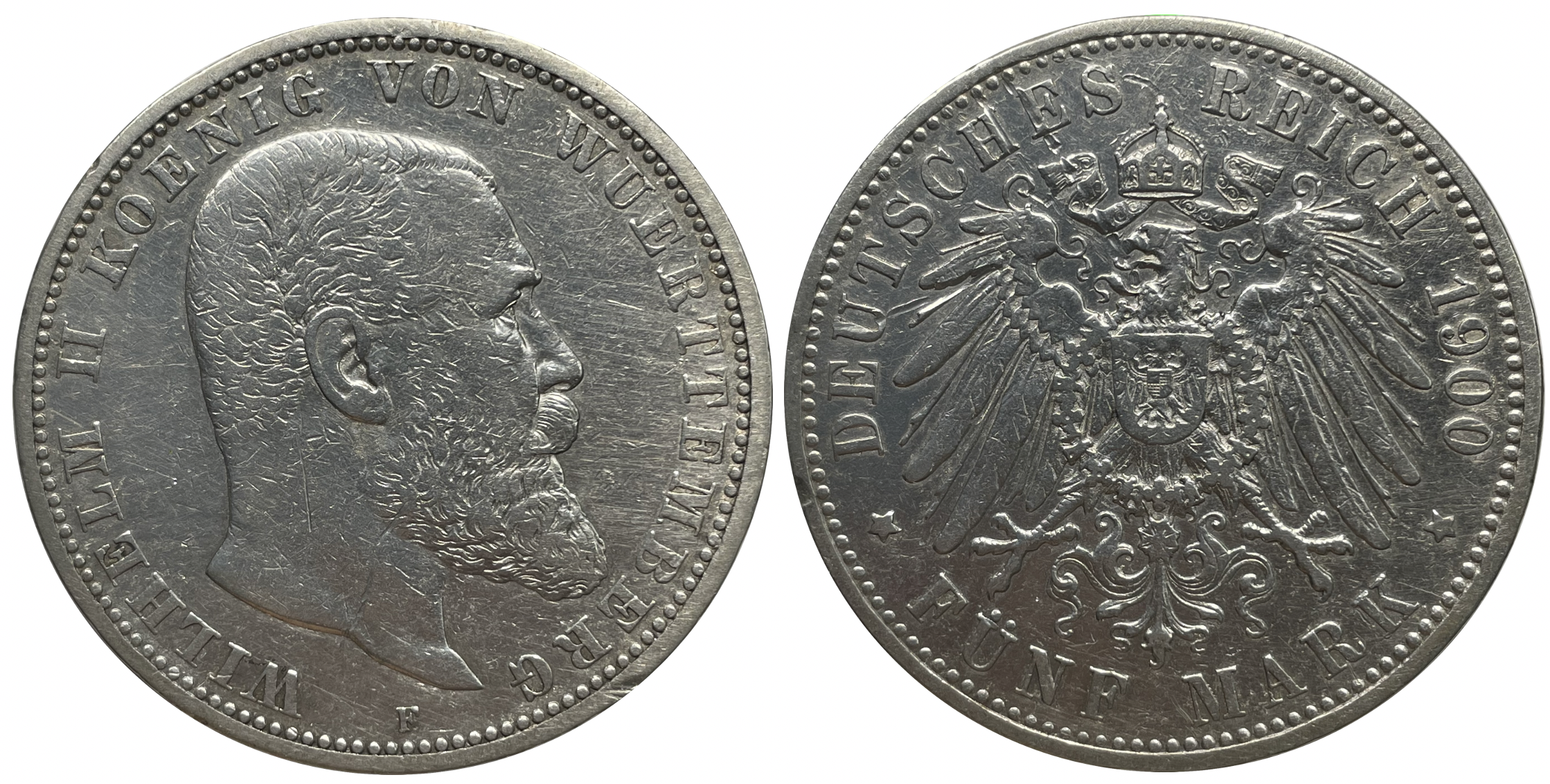|
Princess Marie Luise Charlotte Of Hesse-Kassel
Princess Marie Luise Charlotte of Hesse-Kassel (9 May 1814 – 28 July 1895) was a member of the House of Hesse-Kassel by birth. Through her marriage to Prince Frederick Augustus of Anhalt-Dessau, she became a princess of Anhalt-Dessau. Family Marie Luise Charlotte was the second child and daughter of Prince William of Hesse-Kassel and his wife Princess Louise Charlotte of Denmark. She was an elder sister of Louise of Hesse-Kassel, consort of Christian IX of Denmark: Her other siblings included Prince Frederick William of Hesse-Kassel and Princess Auguste Sophie Friederike of Hesse-Kassel. Marriage and issue Marie Luise Charlotte married Prince Frederick Augustus of Anhalt-Dessau, fourth but third surviving son of Frederick, Hereditary Prince of Anhalt-Dessau and his wife, Landgravine Amalie of Hesse-Homburg, on 11 September 1832 at Rumpenheimer Schloss in Offenbach am Main. The couple had three children: * ''Adelaide Marie'' (Dessau, 25 December 1833 – Schloss Königst ... [...More Info...] [...Related Items...] OR: [Wikipedia] [Google] [Baidu] |
Prince Frederick Augustus Of Anhalt-Dessau
Frederick Augustus of Anhalt-Dessau (german: Friedrich August von Anhalt-Dessau) (23 September 1799 – 4 December 1864), was a German prince of the House of Ascania from the Anhalt-Dessau branch. Birth and family Frederick was born in Dessau on 23 September 1799 as the fourth (but third surviving son) of Frederick, Hereditary Prince of Anhalt-Dessau, by his wife Landgravine Amalie of Hesse-Homburg, daughter of Frederick V, Landgrave of Hesse-Homburg. Marriage and issue In Rumpenheim Castle in Offenbach am Main on 11 September 1832, Frederick Augustus married Princess Marie Luise Charlotte of Hesse-Kassel (b. Copenhagen, 9 May 1814 - d. Schloss Hohenburg, 28 July 1895). She was a daughter of Prince William of Hesse-Kassel by his wife Princess Louise Charlotte of Denmark, a sister of King Christian VIII of Denmark. Marie was an older sister of the later Queen Louise, wife of King Christian IX of Denmark. Frederick and Marie had three daughters: # Adelaide Marie (b. Dessau, 2 ... [...More Info...] [...Related Items...] OR: [Wikipedia] [Google] [Baidu] |
Offenbach Am Main
Offenbach am Main () is a city in Hesse, Germany, on the left bank of the river Main. It borders Frankfurt and is part of the Frankfurt urban area and the larger Frankfurt Rhein-Main urban area. It has a population of 138,335 (December 2018). In the 20th century, the city's economy was built on machine-building, leather-making, typography and design, and the automobile and pharmaceutical industries. Geography Subdivision The inner city area of Offenbach is quite large and consists of the historic center of the city and its expansions of the 1800s. Three formerly independent suburbs were incorporated in the first half of the 20th century: Bürgel being the first in 1908, then Bieber and Rumpenheim in 1938 and 1942. South of the inner city area are the suburbs Lauterborn, Rosenhöhe and Tempelsee. Kaiserlei is a commercial district in the far west of the city bordering Frankfurt. In the west Waldheim is a residential neighborhood on the city limits with ''Mühlheim am Main ... [...More Info...] [...Related Items...] OR: [Wikipedia] [Google] [Baidu] |
Charles William, Prince Of Nassau-Usingen
Charles is a masculine given name predominantly found in English and French speaking countries. It is from the French form ''Charles'' of the Proto-Germanic name (in runic alphabet) or ''*karilaz'' (in Latin alphabet), whose meaning was "free man". The Old English descendant of this word was '' Ċearl'' or ''Ċeorl'', as the name of King Cearl of Mercia, that disappeared after the Norman conquest of England. The name was notably borne by Charlemagne (Charles the Great), and was at the time Latinized as ''Karolus'' (as in ''Vita Karoli Magni''), later also as '' Carolus''. Some Germanic languages, for example Dutch and German, have retained the word in two separate senses. In the particular case of Dutch, ''Karel'' refers to the given name, whereas the noun ''kerel'' means "a bloke, fellow, man". Etymology The name's etymology is a Common Germanic noun ''*karilaz'' meaning "free man", which survives in English as churl (< Old English ''ċeorl''), which developed it ... [...More Info...] [...Related Items...] OR: [Wikipedia] [Google] [Baidu] |
Princess Mary Of Great Britain
Princess Mary of Great Britain (5 March 1723 – 14 January 1772) was the second-youngest daughter of George II of Great Britain and his wife, Caroline of Ansbach, and Landgravine of Hesse-Kassel as the wife of Frederick II, Landgrave of Hesse-Kassel. Early life Princess Mary was born at Leicester House, Westminster, London. Her father was the Prince of Wales, later King George II. Her mother was Caroline of Ansbach, daughter of Johann Friedrich, Margrave of Brandenburg-Ansbach. Her father succeeded, as George II, on 11 June 1727, and she became "HRH The Princess Mary". Upon her death in 1737, her mother, Queen Caroline, entrusted Mary to her elder sister Caroline, urging her to "do what she could to support the meek and mild disposition of Princess Mary". Marriage A marriage was negotiated with Landgrave Frederick of Hesse-Kassel, the only son and heir of William VIII, Landgrave of Hesse-Kassel. For the marriage, Parliament voted Mary £40,000. They married by proxy ... [...More Info...] [...Related Items...] OR: [Wikipedia] [Google] [Baidu] |
Frederick II, Landgrave Of Hesse-Kassel
Frederick II (german: Landgraf Friedrich II von Hessen-Kassel) (14 August 1720 – 31 October 1785) was Landgrave of Hesse-Kassel (or Hesse-Cassel) from 1760 to 1785. He ruled as an enlightened despot, and raised money by renting soldiers ( called "Hessians") to Great Britain to help fight the American Revolutionary War. He combined Enlightenment ideas with Christian values, cameralist plans for central control of the economy, and a militaristic approach toward international diplomacy. Early life Frederick was born at Kassel in Hesse, the son of William VIII, Landgrave of Hesse-Kassel and his wife Dorothea Wilhelmine of Saxe-Zeitz. His paternal grandfather was Charles I, Landgrave of Hesse-Kassel, and his paternal uncle was Frederick I of Sweden. His education was initially entrusted to Colonel August Moritz von Donop and then from 1726 to 1733 to the Swiss theologian and philosopher, Jean-Pierre de Crousaz. Marriages and children On 8 May 1740, by proxy in London, and ... [...More Info...] [...Related Items...] OR: [Wikipedia] [Google] [Baidu] |
Duchess Sophia Frederica Of Mecklenburg-Schwerin
Sophia Frederica of Mecklenburg-Schwerin (24 August 1758 – 29 November 1794) was born a Princess and Duchess of Mecklenburg-Schwerin, and by marriage Hereditary Princess of Denmark and Norway. Life Born in Schwerin, she was the only daughter of Duke Louis of Mecklenburg-Schwerin, second son of Christian Louis II, Duke of Mecklenburg-Schwerin, and Princess Charlotte Sophie of Saxe-Coburg-Saalfeld. Her only sibling was Frederick, who was about two years older. Life in Denmark On 21 October 1774 in Copenhagen, she married Hereditary Prince Frederick of Denmark and Norway, the son of King Frederick V of Denmark and his second wife Juliane Marie of Brunswick-Wolfenbüttel, who was the regent in Denmark between 1772 and 1784. She was sixteen years old when she was married. Sophia Frederica, known as ''Sofie Frederikke af Mecklenburg-Schwerin'' in Denmark, was described as jolly, charming and intelligent. She had a hard time in the beginning adapting to her new, stiffer environme ... [...More Info...] [...Related Items...] OR: [Wikipedia] [Google] [Baidu] |
Frederick, Hereditary Prince Of Denmark And Norway
Frederick, Hereditary Prince of Denmark ( da, Frederik; 11 October 1753 – 7 December 1805) was heir presumptive to the thrones of Denmark and Norway. He was the only surviving son of King Frederick V by his second wife, Juliana Maria of Braunschweig-Wolfenbüttel. Hereditary Prince Frederick acted as regent on behalf of his half-brother King Christian VII from 1772 to 1784. Life Early life Frederick was born at Christiansborg Palace in Copenhagen on 11 October 1753. To provide for his future position, at the age of 3 he was elected coadjutor in the Prince-Bishopric of Lübeck. This meant that in time he would succeed the Prince-Bishop then in office, Frederick August. This plan had to be abandoned, however, and Frederick stayed in Denmark as a junior member of the royal family. Marriage He married Duchess Sophia Frederica of Mecklenburg-Schwerin (1758–1794) in Copenhagen on 21 October 1774. She was a daughter of Duke Louis of Mecklenburg-Schwerin and Princess Charlotte ... [...More Info...] [...Related Items...] OR: [Wikipedia] [Google] [Baidu] |
Princess Caroline Of Nassau-Usingen
Princess Caroline of Nassau-Usingen (german: Prinzessin Karoline Polyxena von Nassau-Usingen; 4 April 1762–17 August 1823) was the elder daughter of Karl Wilhelm, Prince of Nassau-Usingen, and wife of Landgrave Frederick of Hesse-Kassel. Early life Caroline was born at Biebrich, Nassau-Usingen the second child and first daughter of Karl Wilhelm, Prince of Nassau-Usingen (1735–1803), and his wife, Countess Caroline Felizitas of Leiningen-Dagsburg (1734–1810), daughter of Christian Karl Reinhard, Count of Leiningen-Dagsburg-Heidesheim. Caroline, via her mother's roots among the Alsace lords of Leiningen, was a cousin of the Danish aristocrat, the Duke of Augustenborg, as both were direct descendants of the important Danish and Sleswicker magnate and statesman Frederik Ahlefeldt. This Danish connection played a role in Caroline's marriage. Marriage and family Caroline married on 2 December 1786 in Biebrich to Landgrave Frederick of Hesse-Kassel (1747–1837), younges ... [...More Info...] [...Related Items...] OR: [Wikipedia] [Google] [Baidu] |
Prince Frederick Of Hesse-Kassel
Prince Frederick of Hesse-Kassel (11 September 1747 – 20 May 1837) was a younger member of the dynasty that ruled the Landgraviate of Hesse-Kassel (or Hesse-Cassel) and a Danish general. He was born as the youngest son of Hereditary Prince Frederick of Hesse-Kassel (the future Landgrave Frederick II) and Princess Mary of Great Britain. He was the last surviving legitimate grandchild of George II of Great Britain, dying one month before Queen Victoria (granddaughter of his first cousin King George III) ascended to the throne. Youth His father, the then hereditary prince (who reigned from 1760 and died in 1785) had in 1747 left the family and soon converted to Catholicism, and in 1755 formally ended his marriage. The young prince Frederick, together with his two elder brothers, were with their mother the Landgravine Mary and became fostered by Protestant relatives in 1747. Soon the family moved to Denmark to be guests of her sister Louise of Great Britain, who died in 17 ... [...More Info...] [...Related Items...] OR: [Wikipedia] [Google] [Baidu] |
Georg Moritz, Hereditary Prince Of Saxe-Altenburg
George Moritz, Hereditary Prince of Saxe-Altenburg (''William George Moritz Ernest Albert Frederick Charles Constantine Edward Maximilian''; 13 May 1900 – 13 February 1991), was the last head of the ducal house of Saxe-Altenburg and nominal Duke of Saxe-Altenburg. He devoted much of his life to promote anthroposophy. Life Born in Potsdam, Prussia, he was the eldest son of Prince Ernest of Saxe-Altenburg and Princess Adelaide of Schaumburg-Lippe, his first wife. At the time of his birth, his father, then the third-in-line to succeed the Ducal throne, lived with his wife in Prussia as a Captain and commander of the 1st Regiment of Foot Guards in Potsdam. George Moritz and his three siblings were all born and lived there. The death of his father Prince Moritz on 13 May 1907, made Prince Ernest the Hereditary Prince of Saxe-Altenburg, and nine months later (7 February 1908) with the death of his uncle Duke Ernest I he became in the new ruler of the Duchy of Saxe-Altenburg as ... [...More Info...] [...Related Items...] OR: [Wikipedia] [Google] [Baidu] |
Saxe-Altenburg
Saxe-Altenburg (german: Sachsen-Altenburg, links=no) was one of the Saxon duchies held by the Ernestine branch of the House of Wettin in present-day Thuringia. It was one of the smallest of the German states with an area of 1323 square kilometers and a population of 207,000 (1905) of whom about one fifth resided in the capital, Altenburg. The territory of the duchy consisted of two non-contiguous territories separated by land belonging to the Principality of Reuss. Its economy was based on agriculture, forestry, and small industry. The state had a constitutional monarchical form of government with a parliament composed of thirty members chosen by male taxpayers over 25 years of age. History The duchy had its origins in the medieval Burgraviate of Altenburg in the Imperial Pleissnerland ''(Terra Plisensis)'', a possession of the Wettin Margraves of Meissen since 1243. Upon a partition treaty of 1485, Altenburg fell to Ernst, Elector of Saxony, the progenitor of the Ernesti ... [...More Info...] [...Related Items...] OR: [Wikipedia] [Google] [Baidu] |
William II Of Württemberg
, spouse = , issue = Pauline, Princess of WiedPrince Ulrich , house = Württemberg , father = Prince Frederick of Württemberg , mother = Princess Catherine of Württemberg , birth_date = , birth_place = Stuttgart, Kingdom of Württemberg , death_date = , death_place = Bebenhausen, Württemberg, Weimar Republic , religion = Lutheran William II (german: Wilhelm Karl Paul Heinrich Friedrich; 25 February 1848 – 2 October 1921) was the last King of Württemberg. He ruled from 6 October 1891 until the dissolution of the kingdom on 30 November 1918. He was the last German ruler to abdicate in the wake of the November Revolution of 1918. Early years William was born the son of Prince Frederick of Württemberg (1808–1870) by his wife Princess Catherine Frederica of Württemberg (1821–1898), herself the daughter of King William I of Württemberg (1781–1864). His parents were first cousins, being the children of two brothers, and ... [...More Info...] [...Related Items...] OR: [Wikipedia] [Google] [Baidu] |
.jpg)





